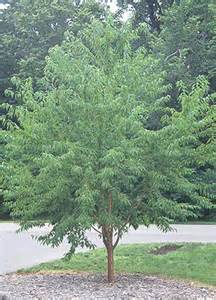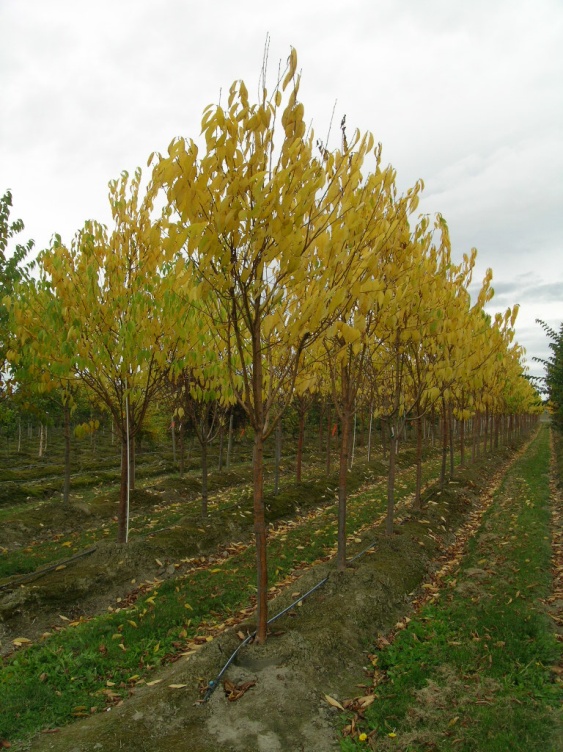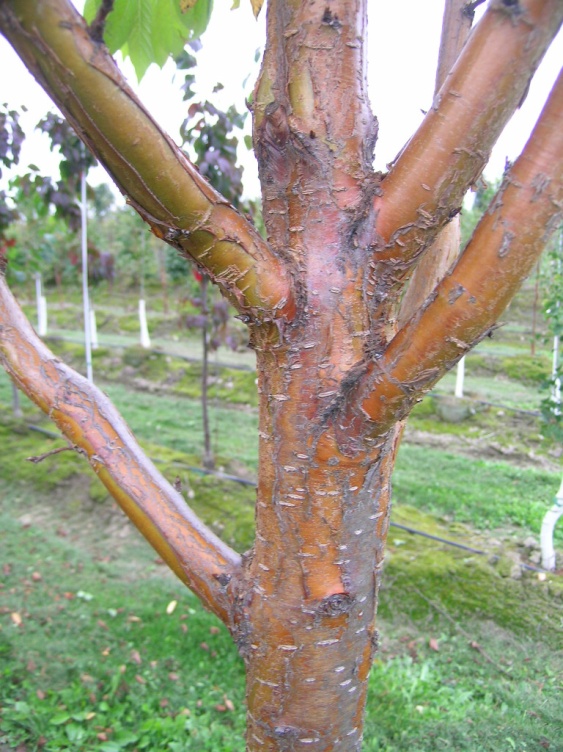Prunus Maackii
 This tree profile is especially popular in Alaska, Idaho, British Columbia and the colder parts of Washington and Oregon. And speaking of Alaska, if you got to Anchorage, you would see this goldbark cherry, Prunus maackii, scattered all over town. I have also noticed this tree growing at rest stops along the northern Border States. Obviously, this is a cold tolerant hardy tree, zone 3 they say, but suspect will take even colder weather.
This tree profile is especially popular in Alaska, Idaho, British Columbia and the colder parts of Washington and Oregon. And speaking of Alaska, if you got to Anchorage, you would see this goldbark cherry, Prunus maackii, scattered all over town. I have also noticed this tree growing at rest stops along the northern Border States. Obviously, this is a cold tolerant hardy tree, zone 3 they say, but suspect will take even colder weather.
As the name implies, the bark of this tree is gold or cinnamon colored, shiny, peeling and can be quite spectacular on a sunny day. As cherries go, I am surprised goldbark cherry is not used as much as any other cherry given the maladies we put up with for more popular cherries, especially on the wetter side of the mountains.
In better soils it could reach 45 feet, and is a fast grower. The shape is broadly upright. Branch structure is relatively wide, very acceptable with no obvious inclusions on branch attachments when young. Leaves are light to lime green, not necessarily very dense in canopy, which can be good for air circulation. They do not like wet feet, so prefer well drained soils to thrive. The flowers are small, fragrant and white, followed by small black berries in the fall. This fruit is almost tiny and not usually very plentiful in my experience. 
We have found that they transplant easily and surprisingly do not appear to have aggressive root systems, at least compared to our over used kwanzan cherry. The goldbark cherry appears to be more of a park tree but would likely do well on streets if given enough room to grow. From our experience,  they have been the most sought after tree in Alaska because they are hardy tough and reliable growers. Have you seen this tree used in your area?
they have been the most sought after tree in Alaska because they are hardy tough and reliable growers. Have you seen this tree used in your area?
As always, let me know your experience with this tree.
ISA Certified Arborist #0135
ASCA Registered Consulting Arborist #356 CLICK HERE FOR MORE TREE PROFILES
Certified Tree Risk Assessor #PNW-0327
Mount Vernon, WA 98273
(O) 360-428-5810
(M) 360-770-9921
(F) 360-428-1822
sales@urbanforestnursery.com


